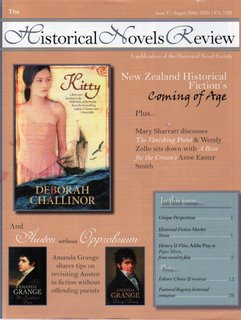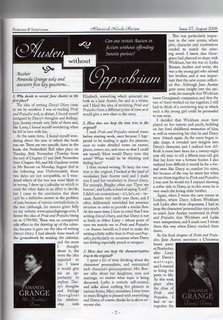 The benefits of being a member include receiving the Historical Novels Review four times a year and this in itself is a good reason to join. I've discovered a lot of very useful research books this way, as well as fiction and non fiction books to read for pleasure. Some I would have come across anyway, but many more would have been missed without the HNS to bring them to my attention. Other benefits include a Solander magazine, with its wide of variety of interesting articles on all aspects of history, and an annual conference.
The benefits of being a member include receiving the Historical Novels Review four times a year and this in itself is a good reason to join. I've discovered a lot of very useful research books this way, as well as fiction and non fiction books to read for pleasure. Some I would have come across anyway, but many more would have been missed without the HNS to bring them to my attention. Other benefits include a Solander magazine, with its wide of variety of interesting articles on all aspects of history, and an annual conference.Members come from all around the world. To find out more, click here.

But back to Austen without Opprobrium. If you want to read the full article, you'll find it on my website, but here's an extract.
Q: How did you keep the tone true to the original?
A: I read Pride and Prejudice several times before starting work, once because I happened to be reading it again for pleasure, once to make detailed notes on names, places, events etc, and once so that I could ask myself, ‘How would Darcy view this scene? What would he be thinking and feeling here?’
"I then started writing. To keep the tone true to the original, I looked at the kind of vocabulary Jane Austen used and I made sure I used her vocabulary in Darcy’s Diary. For example Bingley often says ‘Upon my honour’, and Lydia is fond of saying ‘Lord!’. I didn’t use contractions – it’s, he’s etc - because Austen very rarely uses them, and I often deliberately mimicked her sentence structure in order to provide a similar flow. At the same time, I bore in mind that I was writing Darcy’s Diary, and that Darcy is not as lively as either Lizzy – whose point of view we mainly see in Pride and Prejudice – or Austen herself, so I tried to make the writing a little stiffer than in Pride and Prejudice, particularly on occasions when Darcy was feeling especially proud or arrogant."
Amanda Grange

1 comment:
That was a really interesting article, Amanda. Thank you.
Post a Comment